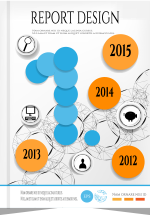Grid Modernization is Necessary to Realize the Value of DERs and Ensure Stability
.png?width=339&name=MicrosoftTeams-image%20(77).png)
Last month, I traveled to Louisville, Kentucky to attend the National Association of Regulated Utility Commissioners (NARUC) 2021 annual meeting. While there, I joined three other panelists in a breakout panel session sponsored by SEPA and EPRI to discuss strategies and barriers to the continued growth of distributed energy resources (DERs) on the grid.
The panel presentation was led by Haresh Kamath, Director of Distributed Energy Resources and Energy Storage at EPRI, and followed on the theme of a recent EPRI white paper: “Maximizing Distributed Energy Resource Value Through Grid Modernization.” My co-panelists were Ann Rendahl of the Washington Utilities and Transportation Commission, and Kristin Munsch, Director of Regulatory and Customer Strategy at National Grid.
In my role, I work with utilities of all ownership types (IOU, cooperative, and public power) and sizes as they invest in a range of smart infrastructure technologies and analytics. Utilities are in various states of DER adoption and readiness across America as clean and renewable energy mandates, customer demand, and resource availability vary throughout the country.
Regardless of where a utility is on the adoption curve, the common view shared by virtually all is the imperative to maintain grid reliability and resilience during DER integration. In addition to the utilities’ central role, energy customers can and should be an integral part of the transition. Modernizing the distribution side of the grid, which reaches directly to the customer, is a sometimes-overlooked piece of the puzzle for policymakers.
Before a utility can invest in modernizing the grid to integrate DERs, it must demonstrate the value or cost-effectiveness of these investments to a regulator or governing body. Whether the venue is a rate case, a grid modernization proceeding, or a response to a legislator’s directive, the way economic value is currently approached doesn’t always adequately address the full range of grid modernization investments. This is particularly the case in a traditional cost of service regulatory construct, where, in addition to infrastructure cost, regulators must balance multiple additional considerations such as safety, affordability and reliability in the face of extreme weather events and more outages occurring with higher frequency and intensity on the distribution side of the grid.
As planners consider the effects of transitioning a larger portion of the generation mix to DERs – whether utility or customer operated – it’s clear the distribution grid will need to become more dynamic, with the ability to recognize and adapt to changing conditions more rapidly than it can today.
From Landis+Gyr’s perspective, addressing this challenge starts with grid edge intelligence, along with greater interoperability between consumer and utility devices. Put simply, this means utility components, such as meters, sensors and switches need to be able to make decisions and react autonomously in real time to changes brought about by DERs and other drivers. At the same time, there needs to be situational awareness shared among grid operators, distribution utilities, and consumers, who will be able to automate how appliances and distributed resources respond to price and demand signals.
This connects to one of the key concepts Kamath discussed during the panel: how visibility and controllability are two critical aspects of DER integration. Grid orchestration becomes more complex as utility customers increasingly become generators as well as consumers of electricity, also known as prosumers.
The shift from consumer to prosumer also presents opportunities for utility customers to become grid resources, as electric vehicles (EVs), rooftop solar systems, batteries, and smart appliances can be harnessed (with customer opt-in) for more robust demand response, time of use, and overall load balancing activities. With this evolution comes the need for more intelligence, granularity of data, and real-time capabilities at the grid edge.
In some states, regulators are looking at time-of-use rates as being the most effective method of managing shifting peaks. But to be effective, financial incentives need to be tied to easily accessible consumer information. Therefore, Landis+Gyr is committed to consumer engagement technology that provides energy consumers with data and automation tools for effortless peak energy management without needing to forgo comfort or convenience.
Customers adopting rooftop solar, EVs, and increasingly investing in technologies like home battery storage, are seeking this visibility and controllability as well. These prosumers are highly engaged in their energy usage, and they want to make the most of their investments. Empowering early adopters with tools that meet their needs will be crucial for utilities as the technologies become mainstream.
It’s an exciting time in our industry with so much opportunity and possibility, however it’s not without risks and challenges. Technology adoption is rapid, and the next few years will see an acceleration of how consumers interact with the grid—the transformation is structural. One of the keys to success will be a holistic view of grid modernization investments, and a recognition that investments in DERs—both for policy reasons and customer demand—require a commensurate investment in grid edge technologies to be able to secure the grid and deliver customer benefits.
Regulators are faced with many tough decisions about how best to ensure reliable and affordable energy, while meeting fast approaching carbon reduction targets. Getting the grid modernization train rolling is the first foundational step in this process.










.png)

Leave a comment